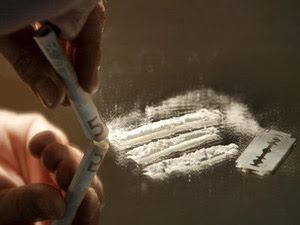
Analysts on 27 brains of cocaine users of addictive substances has made a team of experts led by Dr.Hans C. Breiter of Massachusetts General Hospital, Boston (USA) conclude that brain volume addictive crack cocaine users are so small and it's impact on the activities of users of addictive substances.
Results of research from Boston was at the same time clarifying how a person experiences a disadvantage if it has been in contact with addictive substances. Brain volume to-27 za addictive cocaine users compared with brain volume in healthy people 27 and never touched cocaine.
The result is a brain volume and structure called the amygdala `users` at 27 addictive substances smaller than normal size. Although it was not clear what happened but the small size of the depreciation of the amygdala `` most likely due to use of addictive substances are like cocaine.
"The amygdala itself as a small collection of nerves in the brain that also affects the formation process of emotion. The small size of the brain and affect the emotions create negative results of user action addictive substances. Dr. Breiter's research results published by the journal Neuron, Dr. Breiter can not even answer the question of how small amygdala volume represents the impact of the contribution of the use of addictive substances.
Breiter provide a brief explanation that the volume of the amygdala in normal people will grow larger on the left side of the brain and the balance of addictive substances on the user's size to be not symmetric. In a short time the use of addictive substances will make the process of brain growth degerasi.
In a long time, the use of addictive substances will create abnormalities in the action of everyday life. Dr. Breiter use the `magnetic resonance imaging (MRI)` to perform sensing of 27 users addictive substances that can produce images of the brain volume measures.
Addictive substances on the user amygdalas average size 13 percent smaller than the average for the left brain and 23 percent smaller on average brain volume on the right.
Results of research from Boston was at the same time clarifying how a person experiences a disadvantage if it has been in contact with addictive substances. Brain volume to-27 za addictive cocaine users compared with brain volume in healthy people 27 and never touched cocaine.
The result is a brain volume and structure called the amygdala `users` at 27 addictive substances smaller than normal size. Although it was not clear what happened but the small size of the depreciation of the amygdala `` most likely due to use of addictive substances are like cocaine.
"The amygdala itself as a small collection of nerves in the brain that also affects the formation process of emotion. The small size of the brain and affect the emotions create negative results of user action addictive substances. Dr. Breiter's research results published by the journal Neuron, Dr. Breiter can not even answer the question of how small amygdala volume represents the impact of the contribution of the use of addictive substances.
Breiter provide a brief explanation that the volume of the amygdala in normal people will grow larger on the left side of the brain and the balance of addictive substances on the user's size to be not symmetric. In a short time the use of addictive substances will make the process of brain growth degerasi.
In a long time, the use of addictive substances will create abnormalities in the action of everyday life. Dr. Breiter use the `magnetic resonance imaging (MRI)` to perform sensing of 27 users addictive substances that can produce images of the brain volume measures.
Addictive substances on the user amygdalas average size 13 percent smaller than the average for the left brain and 23 percent smaller on average brain volume on the right.

No comments:
Post a Comment